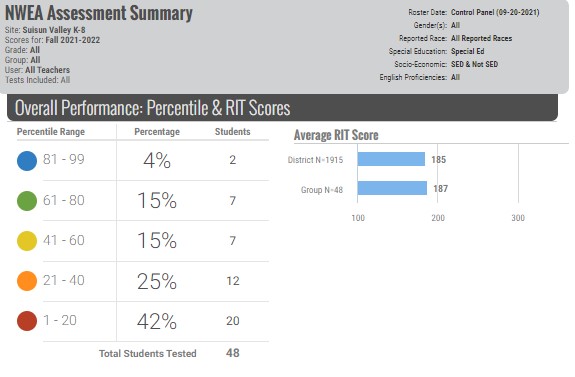Friday, September 24, 2021
September 24, 2021
Friday, September 17, 2021
September 17, 2021
If you don’t collaborate around your students’ academic achievement data, then how do you know if you have alignment?
Observable Fish Moments at SV:
Sunday, September 12, 2021
September 10, 2021
Message from Dan Lopez about Culture of Universal Achievement click to see video
Friday, September 3, 2021
September 3, 2021
It's time to identify students for the GATE program for next school year (2022-23). The GATE testing window will be from December 1 through December 15. We will be blanket testing all 2nd graders this year in addition to 3rd-7tth graders.
For all Grade 2 students
Parents should be notified that all 2nd graders will be tested. Parents do not need to submit a Request to Test for Gate form. Opt out letters will be mailed out to all 2nd grade families on November 1 to be returned by November 15 IF parents want their 2nd grader to opt out of GATE testing.
Students in Grades 3-7
Students will be tested upon parent/teacher request as well as those who have met the preliminary criteria based on their academic data. Blake DiModica and Chris Albans will pull this data from Illuminate and will include the students on the master list of students to test for each site. Here is the link to the Request to Test for GATE Form. The last day to request is October 22nd. Opt out letters will be mailed out on November 1 to 3rd-7th grade families of whom other than parent requested GATE testing. The opt out letter is to be returned by November 15 IF parents want to opt their child out of GATE testing IF requested by other than parent.












